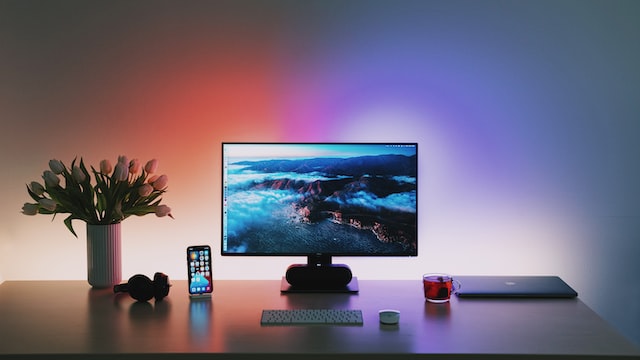Today’s computer monitors are bright, and sharp and provide crystal-clear images. Most video game fans and movie buffs greatly prefer consuming their entertainment over a computer monitor vs. a television screen because monitors are just able to give you a better resolution with a deeper, broader color range. However, not all monitors perform this way, even if they are capable. There may be a few things you need to tweak and change in order to get the most out of your computer monitor.
Monitor’s Display Performance
Here Are 5 Tips You Can Use To Increase Your Display Performance:
1. Change Your Monitor Cable:
Did you know that the stock cable your computer gave you may not be the best for transferring data to your monitor? It’s true; a lot of computer cables that come in stock are cheap and don’t transmit the HD data that you need for a true HD picture. This is because you could be dealing with more of an analog type of cable when what you really need is an HD15 Cable that’s going to transmit the full range of HD data from your computer’s graphics chip (or independent GPU) to your monitor via the analog connection. This is a quick and easy fix that could give you a full HD performance in an instant.
2. Adjust Your Resolution:
You may also want to try adjusting your computer’s resolution. If you have a PC, you can right-click on your home screen and choose the graphics option and then look at what type of resolution you’re running. There is no set standard here. It all depends on the size and style of your monitor and your graphics. What you want to do here is play around with the settings. You can choose a new resolution without being locked in. Just make sure you don’t click “okay” and just go to the next. Finding the proper resolution will bring all of those colors into focus and ensure that your monitor performs a lot better for you.
3: Update Your Graphic Card
You may have a great monitor but some cheap onboard graphics that just aren’t getting the job done. In order to experience true HD performance on your monitor, you’re going to need an independent GPU (Graphic Processing Unit) card at the very least. You don’t have to break the bank here; just pick something up with at least 1GB of independent RAM and you will instantly notice a huge difference. These cards aren’t just for gaming; graphics cards are made to give you the best monitor performance possible.
4: Clean Your Screen
There are all sorts of different ways to improve the performance of your monitor, but one of the easiest is to clean your monitor. You might not realize it, but there could be a layer of film over your monitor that’s comprised of various dust particulates and various other grime. Over time, your monitor gets dimmer and dimmer, and you might think that it’s just fading. However, getting some Windex or some other type of good cleaner may just shock you when you realize your monitor’s colors were just clouded with microscopic debris all this time.
5: Toy With Your Color Range
Another way that may improve your monitor’s performance is to get in there and toy around with your color settings. Every monitor has this type of option, just like every TV. You can adjust your color range, your gamma levels, brightness and contrast, and much more.
Since performance is relative to your personal tastes, you may find that performing a very quick brightness enhancement or changing the contrast will give your monitor a whole new look and feel. It’s going to make viewing your media a lot easier. This is especially true if you work online and have to look at your monitor all day. Adjusting these graphics settings can make a huge difference. You can also get into your GPU settings and adjust things there, for even more monitor tweaks.
In Conclusion:
Rarely is the case that you need a new computer monitor unless it is visibly damaged in some way. You should be able to make a few quick tweaks and greatly improve your monitor’s performance.

